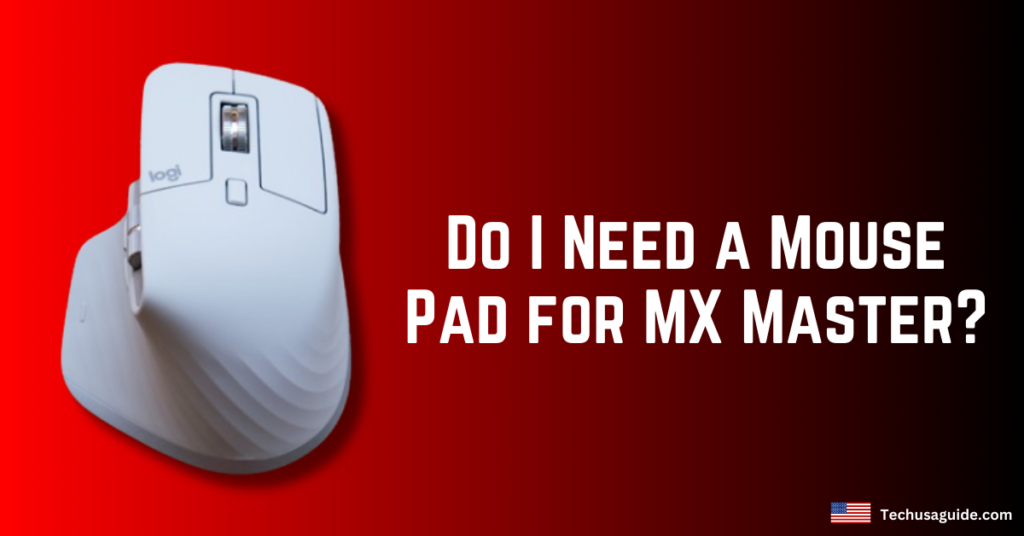Spotify has completely transformed the music industry, emerging as a beloved streaming service that is adored by millions across the globe.
No matter where you are or what you’re doing, Spotify offers a wide range of music to keep you entertained. Many users often encounter a common issue: why is Spotify using so much storage on my phone?
In this extensive guide, we will explore the reasons behind Why does Spotify take so much storage, and offer practical tips on how to effectively manage and optimize your Spotify storage.
Understanding Spotify’s Storage Usage

What is Spotify Storage?
Spotify storage is the amount of space that the app occupies on your device to support its different features. This includes various types of data, such as app data, downloaded songs, cached files, and more. Although a certain amount of storage is required for the app to run smoothly, there are ways to improve and effectively handle it.
Why does Spotify take so much storage?
- Spotify requires sufficient storage to ensure a smooth and uninterrupted listening experience. Here are the things that are included:
- Caching audio files for quicker playback
- Keeping offline downloads for listening when you don’t have an internet connection
- Saving app data for user settings, playlists, and preferences
How Spotify Manages Offline Storage
Spotify uses highly advanced algorithms to handle offline storage, guaranteeing that your favorite tracks are constantly accessible even without an internet connection. Nevertheless, this convenience does require a considerable amount of storage space.
How Does Spotify Use Storage?
Breakdown of Different Types of Data Stored
Spotify stores various data on your device to help improve your listening experience.
- App Data: Important files for the app’s functionality include settings and preferences that boost your usage experience.
- Downloaded Songs: Enjoy your favorite music without worrying about data or weak signals with the songs you’ve saved for offline listening. It’s perfect for travel or when you’re in areas with poor signal strength.
- Cache: Stored data increases playback and boosts user experience by minimizing loading times and buffering for flawless streaming. Spotify effectively manages this cache to optimize performance and minimize data usage.
Related: Does Spotify Notify When You Follow Someone?
Explanation of Spotify’s Caching System
Spotify stores songs in its cache to improve playback speed and minimize data consumption. When you stream a song, parts of it are stored in the cache, which helps to speed up access if you decide to play it again.
This caching process is important for ensuring user satisfaction, although it may result in higher storage usage.
How much space does a Spotify song take up
When you play music, your device’s memory temporarily caches data to ensure smooth playback. After the song is done playing, this data is deleted, making room for future streams. With this method, users can easily access a wide range of music without storing every single track.
On the other hand, when you download music, you get the whole track on your device, so you can enjoy it even without an internet connection. There is a small trade-off for those who prefer to listen to their favorite songs offline: it requires some extra storage space.
Each downloaded track takes up memory until you decide to delete it.
How Spotify song downloads impact storage
Downloading songs can occupy a significant amount of storage on your device, particularly if you have a huge music collection in your library.
Every top-notch audio file, whether in a lossless format or a high-bitrate MP3, needs much storage space. As your library expands, the combined size of these files can quickly get bigger, which may result in storage problems.
How do I organize my music library, Spotify?
It’s always a good idea to go through your collection occasionally and get rid of any songs or playlists that no longer bring you joy. With this improvement, you’ll have more space and a simpler way to find your favorite music. It might be helpful to set a reminder every few months.
Just download the tracks you listen to often. Rather than saving entire albums or playlists, try focusing on the songs that bring you joy. Keeping your collection organized and customized makes it easier to manage and perfectly suited to your own tastes.
Optimize your audio settings for downloads to free up some space. Opting for lower bit rates can help you save storage space without compromising on sound quality while improving your overall music experience.
How does Spotify handle high quality audio?
Spotify provides a range of audio quality options to improve your listening experience, giving you the freedom to select the one that suits your own tastes and data limitations. These are the available options:
- Normal (96 kbps): Great for streaming music while using minimal data, making it a perfect choice for people with limited data plans or weak internet connections.
- High (160 kbps): It strikes a great balance between delivering high-quality sound and being aware of data usage, resulting in a more immersive audio experience.
- Very High (320 kbps): If you’re someone who loves to hear every little detail in your music, this setting will give you the best sound quality. Just keep in mind that it does require a bit more storage and data.
How Spotify Stores Playlists and Podcasts
Playlists and podcasts are stored just like songs, so you can access them offline and enjoy your favorite content without an internet connection.
All episodes of subscribed podcasts are included, ensuring listeners never miss a show, even while on the go. Playlists created by users can be customized to match their tastes, creating personalized listening experiences for different moods or activities.
Optimizing Playlist Size to Minimize Storage Usage
- Create smaller, more focused playlists to make listening easier.
- Take some time to review and remove tracks you don’t jam to anymore.
- Try to avoid duplicating tracks across different playlists.
- Curate your playlists based on mood, activities, or themes for quick access.
- Collaborate with friends to make shared playlists and discover new tunes together.
- Update your playlists regularly to keep things fresh and exciting.
- Think about the flow of songs to create a smooth listening experience.
- Use fun and descriptive titles and tags so you can navigate and search easily.
How do I check my storage on Spotify?

Step-by-Step Guide to Checking App Storage on iOS and Android
ios:
- Start by opening the `Settings` app on your iPhone—just look for the gear icon on your home screen.
- Scroll down a bit and tap on `General` to explore more device settings.
- Select `iPhone Storage` to see a handy list of all the apps installed on your device and how much space they’re using.
- Keep scrolling until you find `Spotify,` then give it a tap to access more options and settings for the app.
Android:
- First, head over to the `Settings` app on your Android device—it’s usually the gear icon.
- Next, tap on `Storage` to see how your device’s storage is being used.
- Then, select `Apps` or `App Manager` to see all the cool applications you have installed.
- Finally, find and tap on `Spotify` in the list to check out its storage usage and tweak its settings.
How to Clear Spotify Cache
Best Ways to Reduce Spotify Storage Use
Clearing the cache is a great method to free up storage space without deleting any of your downloaded songs.
Tools to Optimize Spotify App Storage
- Don’t forget to use Spotify’s handy cache-clearing option.
- Regularly update the app to enjoy all the new optimization features.
How to Clear Spotify’s Cache on iOS, Android, and Desktop
How to reduce Spotify Storage iPhone
- Open up `Spotify`
- Head over to `Settings`
- Tap on `Storage`
- Select `Clear Cache` to free up some space
How to reduce Spotify Storage Android
- Launch `Spotify`
- Navigate to `Settings`
- Tap on `Storage`
- Choose `Clear Cache` to keep things running smoothly
How to reduce Spotify Storage On Pc
- Open `Spotify`
- Click on the Profile Icon
- Go to `Settings`
- Scroll down to `Clear Cache`
- Click `Clear Cache` to tidy up your library
What happens if I clear my cache on Spotify?
Clearing your Spotify cache is a great way to free up space on your device by eliminating unnecessary stored data. This temporary data includes saved album artwork, song info, and playlist details that help the app load faster.
Don’t worry; clearing the cache won’t delete your playlists or saved music, but you might notice a couple of initial loading delays while Spotify rebuilds the cache the next time you use it.
This little trick can also help fix playback issues or app glitches, leading to a smoother listening experience. Enjoy your music.
Does clearing the cache delete playlists?
Just a quick heads up, clearing the cache won’t delete your playlists or any downloaded songs. It just gets rid of those temporary files on your device. Rest assured, your playlists and saved music will stay safe and sound, ready to be accessed the next time you open the app.
How Much Storage Do Spotify Podcasts Use?
Podcasts streamed on Spotify at 96 kbit/s consume approximately 42.19 MB of data per hour. However, when using the web player, this increases to around 56.25 MB per hour.
With a data allowance of one gigabyte (GB), you have plenty of room to enjoy approximately 24.3 hours of listening at the lower bit rate or around 18.2 hours with the web player. This distinction is crucial for users who want to make the most of their listening time without going over their data limits.
How Spotify Uses Storage Space on Windows and Mac
Desktop apps use storage for cached data, downloaded songs, and app data.
Ways to Manage Storage on the Desktop Version of Spotify
- Regularly clear the cache
- Manage downloads
- Update the app for better storage management features
Does Spotify use more data than Amazon Music?
Both Spotify and Amazon Music use similar amounts of data for music streaming, although the specific quality settings you select can lead to some variations.
Let’s take a look at the data usage comparison between the two platforms at different streaming quality levels:
Spotify:
- Low Quality (24 kbps): Approximately 90 MB per hour
- Normal Quality (96 kbps): Approximately 345 MB per hour
- High Quality (160 kbps): Approximately 576 MB per hour
- Very High Quality (320 kbps): Approximately 1.2 GB per hour
Amazon Music Streaming Quality:
- Standard Quality (64 kbps): Approximately 230 MB per hour
- HD Quality (850 kbps): Approximately 360 MB per hour
- Ultra HD (3730 kbps): Approximately 1.8 GB per hour
Low to Normal Quality: Amazon Music’s standard streaming option uses slightly more data than Spotify’s low-quality stream, but it is similar to Spotify’s normal-quality option.
High to Ultra HD Quality: Amazon Music’s Ultra HD uses a larger amount of data in comparison to Spotify’s Very High Quality. Nevertheless, at the HD level, the difference is hardly noticeable.
Conclusion
Managing Spotify’s storage usage may initially seem daunting, but fear not! With the right strategies in place, it’s actually quite achievable. Understanding how Spotify manages storage and using the given suggestions will allow you to enjoy your favorite music without worrying about running out of space.
FAQ
How do I stop Spotify from using so much storage?
If you want to free up some space on Spotify, you can easily manage your downloads by heading over to the settings. From there, you can simply disable the option to download music for offline listening. it’s a good idea to regularly delete any playlists or albums that you don’t need anymore. This will help you free up storage space on your device.
How do I make Spotify use less GB?
Adjusting the audio quality settings can help reduce the amount of GB used by Spotify. Adjusting the streaming quality, particularly when using mobile data, can greatly decrease the amount of data consumed. This option is located in the settings menu under ‘Audio Quality.’
How to make Spotify use less data?
To reduce bandwidth usage:
- Go ahead and close any other apps that are using the internet.
- If you’re a Premium member, why not download some music for offline listening?
- Give the web player a try.
How often should I clear Spotify’s cache?
It’s a good idea to clear Spotify’s cache every few months or when you notice the app is using more storage than usual. Regularly clearing the cache can help keep the app running smoothly and ensure that your device has enough storage space.
More From Techusaguide
- Audible vs. Spotify – Which Is Better?
- Do artists get paid from Spotify?
- How to Know Who Saved Your Spotify Playlist
- Which is Better Fire TV or Smart TV?
- Amazfit Helio Ring Review – best smart ring for health





